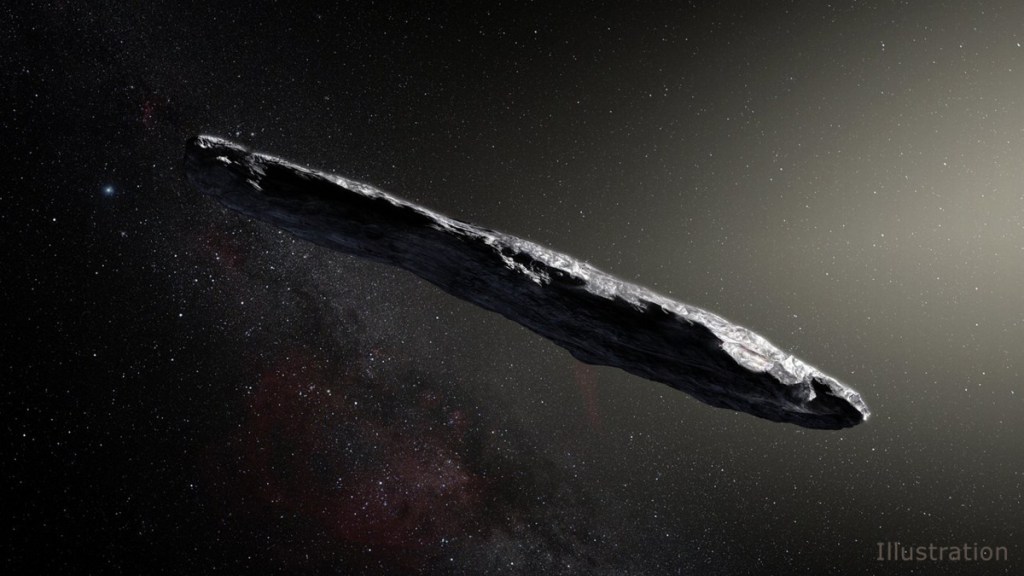Midnight. January. The back deck.
It’s just me, the snow, the cold, stillness, pointed firs, and numberless crystal points of light burning in the black sky. Sirius, Betelgeuse, and to the southwest reddish Aldebaran, in the constellation Taurus.
Every year this all seems deeper and larger than last and, almost unbelievably, more expansive. Most of it you can’t see until you square the facts with your mind. That can be a bewildering undertaking this deep in winter.
Maybe you know that at just about midnight on New Year’s Eve, the New Horizons spacecraft flew its obscure, lonely route past the space rock called Ultima Thule, the most distant object ever seen up close by human robot. Object 2014 MU69 is about 4 billion miles away in the Kuiper Belt, the wild, weird clime that lies beyond Pluto, in the direction of Sagittarius, which this time of year is behind the sun.
Deeper. A little more than a year ago, from out of space and time came wheeling into the solar system the first object ever seen whose trajectory indicates it’s from interstellar space. The astronomers tracked it carefully. It’s highly reflective, appears to be oblong in shape, and is tumbling. They don’t know what it is. It has the wrong shape and path to be an asteroid. They’re pretty sure it’s not a comet because it did not develop a tail of outgassing material when it slingshotted around the sun. And most strangely, when it should have been slowing down as it left the sun’s vicinity, it accelerated. In a report filled with detailed mathematical analysis, some astrophysicists concluded there’s a strong possibility the object is “a lightsail, floating in interstellar space as a debris from an advanced technological equipment.”
In other words, professional astronomers think it could be a piece of an alien spacecraft. The astronomers named the object “Oumuamua,” a Hawaiian word meaning “scout.”
Larger. In the 13.7 billion years we know of that the universe has existed, around 2 trillion galaxies have arisen. We live in one of them, and you can see another one, M31 in the constellation Andromeda. It looks like a faint smudge in a clear, dark January sky. Recent studies indicate all these galaxies have contained about a trillion trillion stars, and taken all together, these stars have generated 4 x 10 to the 84th power photons of light. Or to spell out the arithmetic: 4,000,000,000,000,000,000,000,000,000,000,000,000,000,000,000,000,000,000,000,000,000, 000,000,000,000,000,000,000 photons.
The astrophysicists say nothing about your actual experience of a fact like this, about what your mind can or cannot do with an enumeration of particles of light. Some of the problem is that in an expression like “the universe began 13.7 billion years ago,” there is really no such thing as “ago.” At a certain point (which is much closer to your backyard than you might think), time and space congeal, and years — as in “light-years” — describe not just a period of time, but a distance in space. The universe is filled with light, from start to finish, or really, just simply forever. All the stars above my firs are just the ones near and bright enough to see by human eye in this one galaxy lying in its inconspicuous nick of time.
All this has been on people’s minds much, much longer than has historically been believed. Researchers building on other studies in archaeology and astronomy recently verified that the distant antecedents of people who 17,000 years ago made astonishing cave paintings in southern France were well aware of a 26,000-year cycle in the stars that we call the precession of the equinoxes. Their lore and learning contained factual information — in forms much different from our scientific reports — describing what’s known now as coherent catastrophism: periodic collisions of cometary debris with the Earth that cause worldwide climate and ecological changes. Ten thousand, 17,000, 40,000 years ago, people knew about these disasters, and knew they were associated with the sky in the direction of the constellation Taurus. Even though they did not know about meteor streams left over from shattered comets, they had ways of remembering and describing them.
Aldebaran and the other stars of Taurus, just west of Orion, are still up there on January midnights. They’re the same stars my ancient ancestors saw in northern Europe. It all expands and congeals, somehow, in a single moment on the back deck. Out of space — out of time.
Dana Wilde lives in Troy. You can contact him at naturalist1@dwildepress.net. His writings on astronomy and cosmology are available in “Nebulae: A Backyard Cosmography” in paperback and electronic form, and in “Pluto: New Horizons for a Lost Horizon.” Backyard Naturalist appears the second and fourth Thursdays each month.
Send questions/comments to the editors.



Comments are no longer available on this story